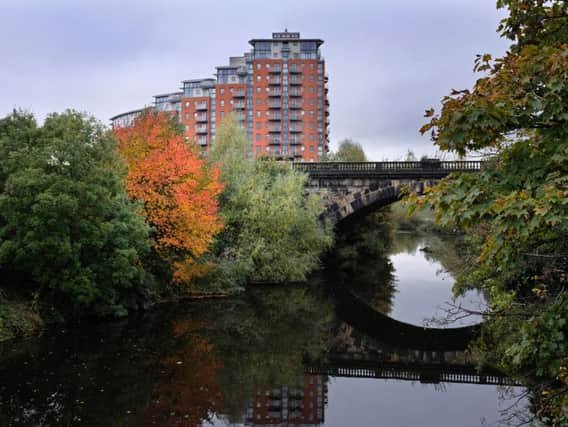Wildlife flourishes on once no-go Leeds-Liverpool canalside - Roger Ratcliffe


Advertisement
Hide AdAdvertisement
Hide AdIn the butterfly world this sighting is not so unusual; a clue to its rarity status is in the name. Common blues are seen almost everywhere from Cornwall to Orkney, and at this time of year they appear particularly widespread in limestone areas of the Yorkshire Dales where they feed on bird’s-foot trefoil aka “eggs and bacon”.
But finding it so close to the centre of a large city is a reminder of just how successful efforts have been to clean up areas once considered wastelands. Thus our canals are now wildlife corridors whereas a few decades ago some urban stretches of the Leeds-Liverpool were the epitome of the saying “it’s grim up north”.
Until Kirkstall Power Station was converted from coal to oil-fired generators in the 1960s boatloads of coal streamed through the city from Yorkshire collieries and the towpath was not a place anyone wished to spend their leisure time.
Now, though, there are walkers, runners and cyclists and it is a vibrant linear habitat for butterflies, birds and wildflowers.
Advertisement
Hide AdAdvertisement
Hide AdOne reason for the success is that the towpath has not been treated with the chemical sprays that have wreaked so much damage on farmland, and my walk from the centre of Leeds to the new railway station at Kirkstall Forge was more rewarding than some recent trips into the countryside.
Besides common blues there were orange-tip butterflies, small coppers, marbled whites and brimstones.
Even before I had reached the flyover linking the inner ring road with the notorious Armley Gyratory roundabout I had heard the garbled song of a blackcap.
Years ago the wash from heavily laden coal barges would have prevented the growth of aquatic plants but now parts of the canal are richly decorated with Iris pseudacorus, better known as yellow flag or yellow iris, and clumps of reeds from which emerged moorhens and chicks.
Advertisement
Hide AdAdvertisement
Hide AdGrey wagtails flashed their lemony-yellow underparts as they performed aerial ballets over the water in pursuit of insects.
A pinkish-red male bullfinch, its large black bill stuffed with food for its young, sat on top of a security fence while a mistle thrush rattled noisily across the canal.
All this was less than half a mile from one of the most densely populated parts of Leeds.
As for Kirkstall Power Station, it closed in the 1970s and part of the site is now a 24-acre nature reserve. There are otter bolts, ponds, wildflower meadows with more than 180 plants recorded, and an apple orchard buzzing with bumble bees.
It may be hard for humans to blot out the city because of a busy railway line running nearby and the flight path to Leeds-Bradford airport overhead, but thankfully the wildlife doesn’t seem to mind.